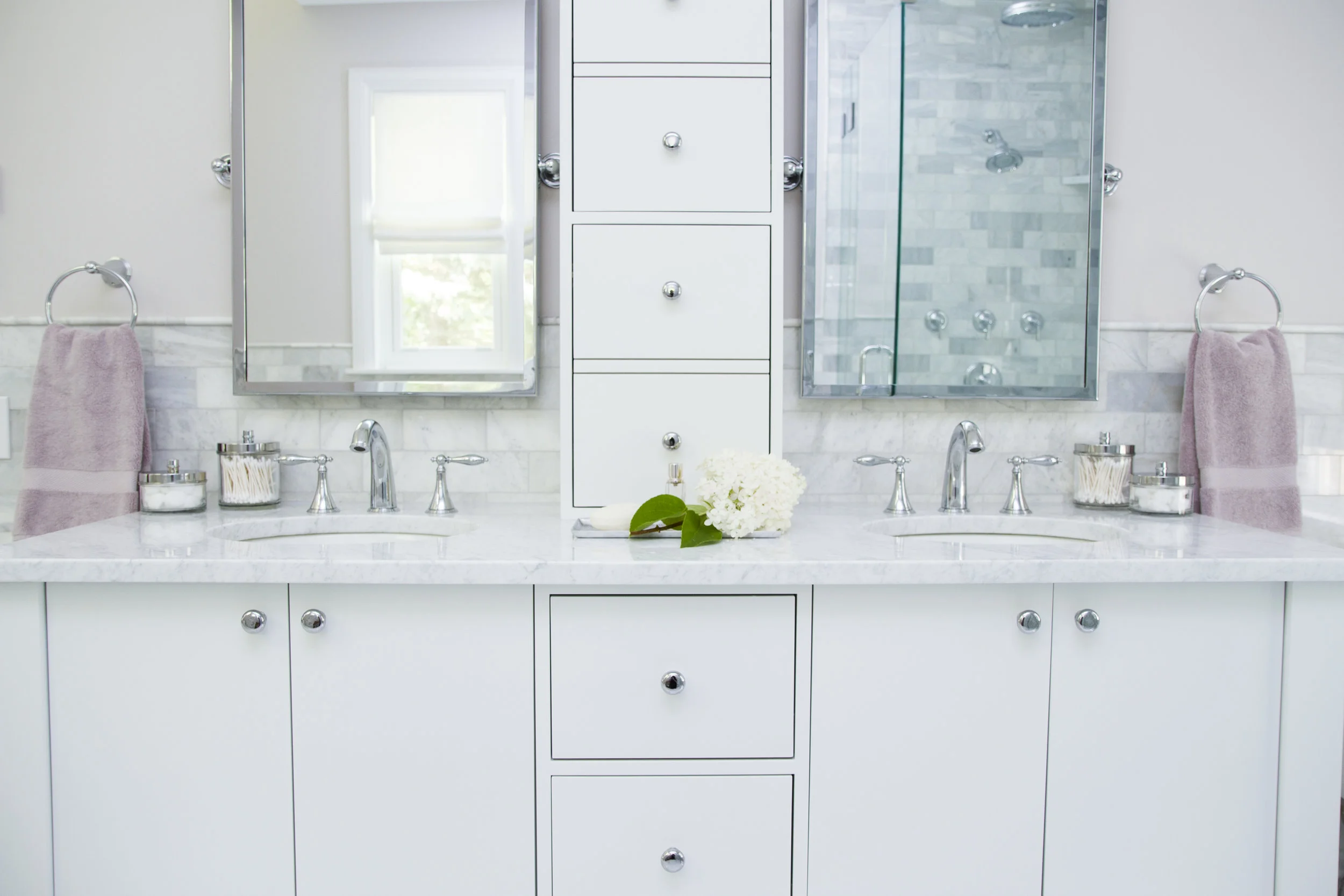If you've done a design or renovation project in the past, you've likely come across the option of doing something custom. It's a heavily utilized preference in the design world for a few reasons. Today, we're breaking down the pros and cons of going custom to help you decide which way to go in your next design project.
The Pros
- The world is truly your oyster here. You can have something created in any style, in a number of finishes with very few limitations.
- Size is never a problem. Sometimes there are awkward sized walls or corners in project, which can be easily addressed when you're doing something custom. Other times, you find a piece you LOVE, but it's half the size you need it to be. When you're customizing, these can all be accommodated to fit the project specifications.
- It fits your wants or needs. Aside from being able to create something that is specific to a design you created in your head, you can also make some tweaks that best suit the way you use something. On the taller side? Create a vanity that's a little higher than standard. Prefer to have certain appliances or items hidden but ready to go at a moments notice? Build cabinets or drawers specifically for this purpose. A bonus is being able to incorporate electrical specifically for these items too.
- Quality. There is no arguing that there is a higher level of quality attached to custom pieces. Everything is one-of-a-kind and the time invested in creating that piece shows over mass-produced products.
The Cons
- It's not cheap. You know that dollar bill emoji with the wings? Just insert that here. We're not saying it's not worth it (it definitely is!), but you should know that custom comes with a cost.
- Timelines are usually longer. If you're incorporating custom pieces into a larger construction project, this isn't usually a problem. But if you're looking for a one-off piece in short order, custom is likely not for you. This isn't true for all our vendors, but the majority of them work with lead times of 10-12 or even 14 weeks. Settle in!
- No returns. If you have something custom designed and built, it can't be returned if you decide you don't like it. You often have that option with standard, stocked pieces of furniture.
- It may not be moveable. If it's built specifically for a space, it likely won't be coming with you if you ever move. Of course you'd expect that in a kitchen or bathroom, but it also goes for any sort of built-in or piece built to fit unique spaces. So make sure you're planning to stay for a while when you invest in custom.
We've included some examples of custom pieces from our own projects below, so take a look before you start a custom project. And let us know if we missed anything!
Here's an example of drawings we created for custom built-ins for a client. In this instance, we were limited by size because they needed to fit an exact space. But we had many options for what they looked like in that space. We started sketching designs with different box configurations and door styles, with open cabinets in different places and more. These are two of the final versions we settled on after a few revisions.
This custom desk was built to accommodate a corner soffit, as well as an outlet behind the cabinet. The client also had specific storage needs that we addressed when we customized the base - filing cabinet drawers, a small drawer for pens, pencils and other small items, and then a base to hold all the cable and internet equipment.
This bathroom vanity is similar to some of the others on the market, but there are a few distinct differences that we were able to include by going custom. The space for the vanity was a little larger than standard, so we made it fit the space better. Additionally, we hid some outlets inside those top cabinets, which means no ugly outlets or holes in the beautiful marble! One little trick? Those top cabinets were built to look like the drawers below, but they are actually cabinet doors that swing open. By making them look like drawers, we give the whole piece a very consistent and streamlined look.
Sometimes, the best way to achieve your goal is a blend of custom and standard. A semi-custom kitchen like this one is a good example of how and where to compromise. It's more reasonably priced than a fully custom kitchen, but it allows you to make small adjustments to accommodate awkward spacing or sizing issues, or to add components that are must-haves for you personally.






